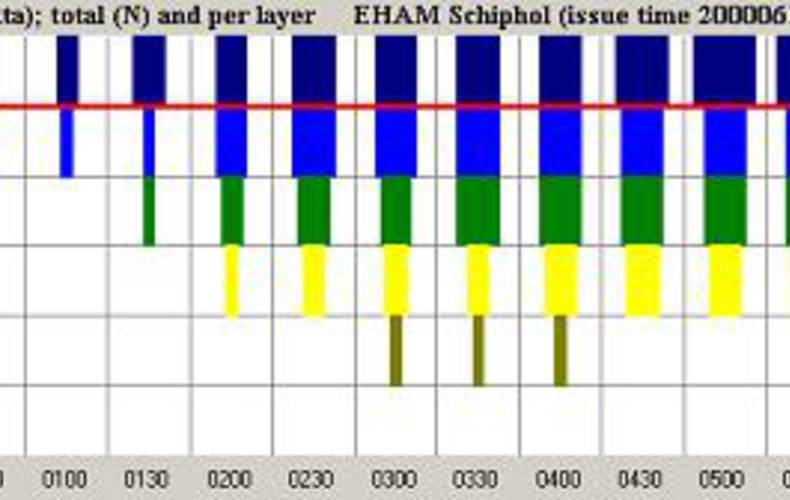
Numerical guidance methods for decision support of aviation meteorological forecasters are presented. The methods have been developed to enhance the usefulness of Numerical Weather Prediction (NWP) model data and local and upstream observations in the production of Terminal Aerodrome Forecasts (TAF) and trend-type forecasts (TREND) for airports. In this paper two newly developed methods are described and it is shown how they are used to derive numerical guidance products for aviation: 1) A combination of statistical and physical postprocessing of NWP model data and in-situ observations. This method is used to derive forecasts for all aviation related meteorological parameters at the airport; and 2) A high-resolution wind transformation method, a technique used to derive local wind at airports from grid box averaged NWP model winds.
For operational use of the numerical guidance products encoding software is provided for automatic production of an alphanumeric TAF and TREND code. A graphical user interface with an integrated code editor enables the forecaster to modify the suggested automatic codes.
For aviation, the most important parameters in the numerical guidance are visibility and cloud base height. Both have been subjected to a statistical verification analysis, together with their automatically produced codes. The results in terms of skill score are compared to the skill of the forecasters’ TAF and TREND code. The statistical measures suggest that the guidance has the best skill at lead times of +04 hours and more. For the short term, mainly trend-type, the persistence forecast based on recent observations is difficult to beat. Verification has also shown that the wind transformation method, which has been applied to generate 10 m winds at Amsterdam airport Schiphol, reduces the mean error in the (grid box averaged) NWP model wind significantly.
The potential of these numerical guidance methods benefits in increasing forecast accuracy. As a result, the related numerical guidance products and encoding software have been integrated in the operational environment for the production of TAFs and TRENDs.
AJM Jacobs, N Maat. Numerical Guidance Methods for Decision Support in Aviation Meteorological Forecasting
Status: published, Journal: Weather and Forecasting, Volume: 20, Year: 2005, First page: 82, Last page: 100